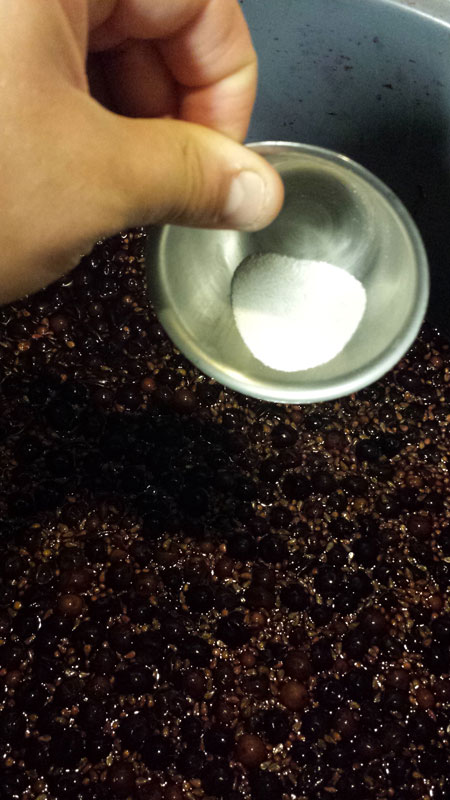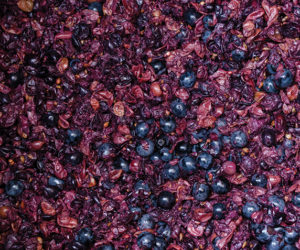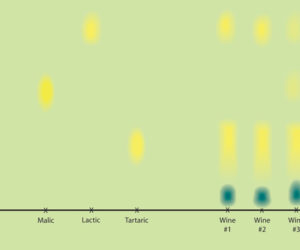
Nitrogen is the number one element found in our atmosphere, yet for plants and animals it can often be one of the most limiting elements to growth. This especially correlates to winemaking. This is because taking nitrogen from the atmosphere and translating into the soil and subsequently into our fermentations is an involved process. Yeast need nitrogen just as much as other living organisms do, so if what we are fermenting doesn’t have enough nitrogen, we need to supplement the must (unfermented wine) with nutrients to help our little microscopic friends do their job. Today we’ll take a spin through why nitrogen is needed, how to test for it, and ways to combat must that is deficient.
Assimilable Nitrogen
As stated earlier, nitrogen (N2) makes up the vast majority of the gas found in our atmosphere, about 78%, and all living organisms found in our world need it to survive. Despite that pivotal role there are only a few living organisms, all of them bacteria, that can take nitrogen from the atmosphere and convert it into a form that the rest of the living can use. We call this usable form of nitrogen “assimilable nitrogen.” When we are talking about nitrogen in our wine must, this is the form that we care about . . . not the level of N2 like we find the atmosphere, because there are no (or not enough) nitrogen “fixing” bacteria in our wine that can change this N2 into assimilable nitrogen (to appreciable levels). In the wine and other fermented beverages world this assimilable nitrogen is better know as YAN or yeast assimilable nitrogen. If the YAN level is not high enough, the yeast fermentation performance can be detrimentally affected. On the other hand, if YAN levels are too high, then flavor of the wine can be negatively impacted. You may end up feeding microbes that you are trying hard to suppress in the winemaking process. But this only happens if too much yeast nutrient is added. So be sure to stick to recommended dosage amounts.
Why Do Yeast Need YAN?
Nitrogen is one of the key components of nucleotides and amino acids, which are the building blocks for RNA, DNA, proteins, peptides, and the enzymes needed for a healthy fermentation. These are all found in the grapes and other fruits and vegetables, but oftentimes winemakers will want to supplement with both an organic form of nitrogen (like Fermaid, which is from yeast) as well as an inorganic form (like diammonium phosphate or DAP, which is a salt). This will ensure that the yeast will have enough nitrogen that they can take in to achieve proper reproduction and fermentation, minimizing your chances of a sluggish or stuck fermentation or the production of off-flavors from stressed yeast.
One of the most important aspects new winemakers need to understand is that not all yeast are created equal — and this is especially true for the demand for nitrogen. Some yeast strains are known as nitrogen hogs, meaning winemakers need to supply more than a typical dosage for these strains. Generally it is recommended that your must contains between 120–220 mg/L of YAN for 21 °Brix juice. The higher end is for those strains with higher nitrogen demands and/or if the must is higher Brix.
When Might YAN Be Needed?
While a boost in YAN levels may not always be needed for a must, most often it will only help the wine. The best way for fresh grape winemakers to assess the YAN levels of their must is to test for it. Home winemakers generally send away samples to a lab that has the capabilities to test for these levels. Many grapes, depending on growing conditions, will bring enough YAN to the must to allow the yeast to grow and finish fermentation. But you may not be maximizing their potential. So a supplement of nutrients is almost always recommended in winemaking.
While a boost in YAN levels may not always be needed for a must, most often it will only help the wine.
Manufacturers will provide their own dosage rates and schedule for dosings, but generally it will be recommended to have a first addition during the yeast rehydration phase (if using commercial yeast and not a wild fermentation). This ensures that your yeast come to the party fully stocked. The second nutrient addition is added as the first signs of fermentation are noted in the must. A final nutrient addition is made about 1⁄3 of the way through (roughly an 8–10 °Brix drop). Depending on the YAN levels of the must you started with, another addition may be warranted in extreme cases, often from non-grape wine situations like meadmaking or hard seltzer production with no YAN at the start. Be sure to check your yeast nutrient supplier’s website for a chart that will match expected YAN levels to a recommended dosing schedule.
Does Nutrient Type Matter?
The short answer is yes, the form of nitrogen that you feed your yeast most definitely matters. Inorganic forms of nitrogen like DAP should not be used as a substitute for the organic form. While I call it an organic form, it often is a blended mix of nutrients including DAP and inactivated yeast. The nitrogen found from the inactivated yeast can easily be assimilated by the growing and budding yeast cells in your must. Studies have shown that opting for this nutrient blend will improve aromas in your wine.







